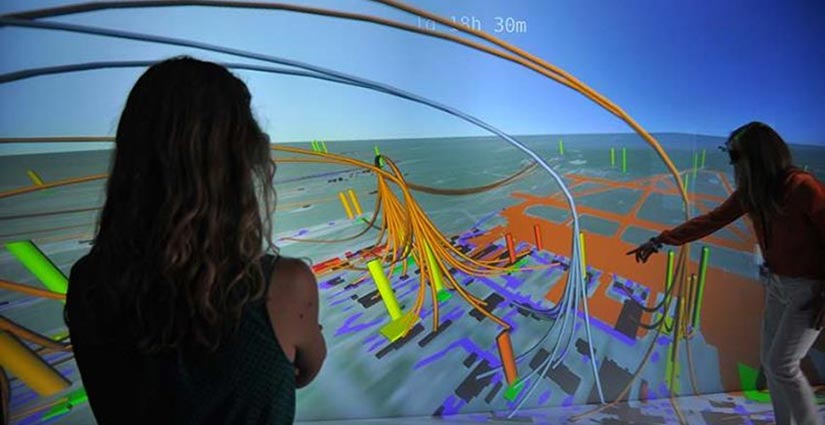Resilience Planning and Decision Support
With increasing utility grid outages in the United States, there is a growing need for resilience planning tools, assessments, and mitigations to reduce negative impacts.

Infrastructure resilience benefits from real-time situational awareness capabilities based on rigorous and quantitative assessment, prediction, and improvement. NLR's data specialists and resilience analysts are creating models, visualizations, and tools to help with resilience evaluations at different scales.
Resilience Planning for the Department of Defense
NLR team members evaluate the resilience posture of defense installations using expertise in system hazards, threats, and vulnerabilities to inform master planning. NLR created a 3D visualization of an Air Force base that showed resilience gaps and highlighted opportunities for on-site solutions, such as solar PV paired with energy storage and diesel generators, to improve resilience for critical loads. In a partnership with the U.S. Navy and Marine Corps, NLR demonstrated advanced microgrid designs and controls that allow installations to be self-sufficient for their electricity needs in the event of a primary power disruption. This includes support for the largest 100% clean energy microgrid within the U.S. Department of Defense and an integrated efficient data center and microgrid at MCAS Miramar. NLR co-developed the Technical Resilience Navigator, and applied the tool to manage the risk to critical missions from disruptions in energy and water services at federal facilities.
The North American Energy Resilience Model
The North American Energy Resilience Model will ensure reliable and resilient energy delivery across energy sectors while considering a range of large-scale, emerging threats. A collaboration among the U.S. Department of Energy, its national laboratories, and industry, the North American Energy Resilience Model will develop a resilience modeling system for North American energy sector infrastructure, including the United States and interconnected portions of Canada and Mexico.
The United States faces increasing threats, both natural and man-made. The North American Energy Resilience Model will allow users to predict the impact of threats, evaluate and identify effective mitigation strategies, and provide support for black-start planning to enhance energy and economic security.
Resilience Assessments
NLR's proven methodology assesses the baseline resilience of a site; identifies and scores hazards, threats, and vulnerabilities; and analyzes risk to prioritize mitigation actions based on cost, difficulty, and risk reduction.
Resilience assessments focus on risks to primary missions, infrastructure, and population and consider ancillary and cascading risks to infrastructure and communities that rely on that infrastructure. A qualitative and quantitative approach allows for a robust combination of data and stakeholder input to guide the analysis, resulting in place-based and implementable solutions that work at different scales and contexts.
Partnerships
NLR values its partnerships for furthering research and deployment of effective resilience solutions. Our partnerships include federal agencies, states, local governments, international governments, and the private sector.
One of NLR’s partners in resilience planning within the energy sector is the U.S. Agency for International Development. Developed through the partnership, the Resilient Energy Platform provides expertly curated resources, training materials, data, tools, and direct technical assistance in planning resilient, sustainable, and secure power systems.
Learn more about partnering with NLR.
Contact
Share
Last Updated Dec. 6, 2025
